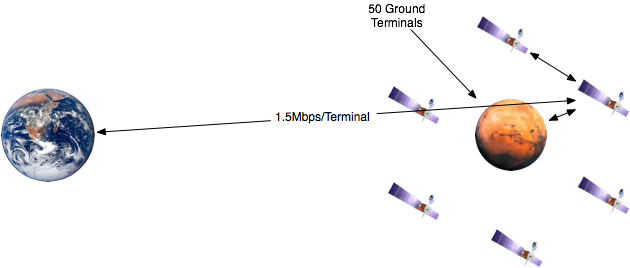|
This section will provide an overview of the design and some facts about Mars.
Mars, or the red planet, has intrigued explorers for thousands of years. Evidenced through the large number of "B" - rated Sci-Fi movies, there has been a strong intrigue for a possibility of life on Mars. Barring Science Fiction, there are very many scientific reasons to pursue study of the red planet. Earth and Mars share many similarities including length of day, presence of atmosphere, and recent discovery of presence of water. Mars is also the easiest planet to reach from the Earth and therefore a good candidate for eventual colonization (this problem will probably get figured out technically before politically[Link]) . These reasons are some of the primary reasons that Mars has been an important part of space exploration. A communications network would aid these exploration efforts, thus driving the motivation for this project. Some relevant mars facts are included in Table 2 [ref 1].
Table 2: Prevents Mars Facts
| Distance to Earth (km) |
401.3E6km |
| Mass (kg) |
6.4185E23 |
| Diameter (km) |
6,804.9 |
| Solar day |
24 hours, 39 minutes, and 35.244 seconds |
In order to meet the requirement for 100% coverage in time and space, relay satellites orbiting Mars are required. For these satellites, a Geostationary Mars Orbit (GMO) allowed for simple calculation and determination of surface coverage. A total of three GMO satellites should provide nearly 100% coverage. An extra three will be included for backup purposes. A major drawback to this implementation was a slight lack of coverage in the polar regions. Therefore, ground terminals near the poles would have to rely on relay from other ground terminals for communication, this link is a topic for future research possibilities. A basic layout of the network can be seen in Figure 1.
Figure 1: Basic Link Concept

Another assumption is that all calculations are for the greatest distance between the communication links, this being the worst case scenario for the link. Since the nominal distances will be less than the maximum distance, an extra link margin (in terms of transmit power, etc) will not be generally provided as the links are designed to operate at the maximum distance.
next: Communication Links
|

